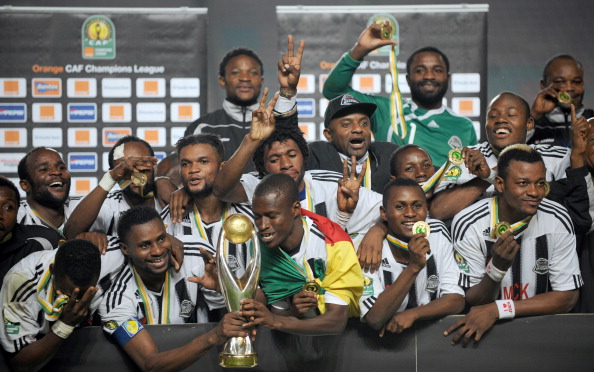Some African football teams view the exorbitant cost of CAF competitions a penalty.
In the days before commercialization, when nationalism was growing and newly, or recently, independent countries looked to make a mark, winning an African football competition carried great currency.
It also carried the financial backing of the state, oftentimes, with limitless expense as national prestige and pride were on the line.
Effectively, national teams and top clubs were able to enter and compete in continental competitions with little concern for costs.
The downside was that it also meant that football associations had no independence. Their reliance on the state coffers – meaning their business – was dictated to them by the government of the day.
Loading...
That is still a factor in some African countries but these days, football seeks to stand on its own feet, assert itself and get by on its own resources – earning revenue from television rights deals, sponsorship agreements and gate takings, which are all important to fund the expense of participation.
But the reality of travel on the African continent is one of enormous expense and football clubs are increasingly wondering whether prestige and national pride is worth the end result, as they expend great fortunes on playing against the other top teams from the continent.
Some nations place more value on it than others. In the Arabic-speaking north of the continent, the long-time dominance of clubs from Egypt, Morocco and Tunisia is a source of regional pride and a massive spur to remain as competitive as possible.
West African clubs still also attach a high value, but it has been years, decades even, since they were regularly among the winners. The independence of their football structures nowadays means resources are limited.
Clubs from West Africa do well with the patronage of benefactors as was the case with Accra’s Hearts of Oak, who were assisted by businessman Harry Zakour, in the early 2000s when they were African champions. More recently, Guinea’s Horoya, enjoys the backing of entrepreneur Antonio Souaré.
The deep pockets of mining magnate Patrice Motsepe allow Mamelodi Sundowns of South Africa to consistently win domestic success and qualify for the African Champions League as a result… and be competitive. He has pumped an estimated R200-million ($14.4-million) into the club over the last decade and encouraged his coachers to chase African success.
But this is not the attitude of most South African clubs, who largely see competition north of their border, such as the Champions League and the Confederation Cup, as a bothersome exercise. They participate with clenched teeth as if carrying out a chore they have to complete but want to dispense with as quickly as possible.
There is a two-fold reason for this. The distraction from domestic competition that remains a priority for insular-thinking South African clubs and the exorbitant cost of participation in the Confederation of African Football (CAF) competitions. “It is money that, quite frankly, would be better spent strengthening our squad with more players,” says a candid Ari Efstathiou, the Ajax Cape Town owner who says it costs anything between R250,000 to R750,000 ($18,000 to $54,000) per game in African competition.
His side are now relegated but just two seasons ago were competing in the African Confederation Cup.
“Of course, it is an honor to be able to represent the country but in the long run, unless you actually win the trophy, it is a big financial burden and there is not much to show for it at the end.”
Travel in Africa is exorbitantly expensive and when you are forced to move a squad of some 30 players, coaches and support staff around the continent, it quickly adds up into a massive bill.
Rarely are flights direct, with many clubs using hubs like Addis Ababa, Nairobi, Dubai and Doha to move from one side of the continent to the next.
The game costs are made up of travel, match-day security, hotels, ground transport and paying for the referees. In a bizarre system, open to much abuse, CAF forced the home club to pay for the flights and the daily allowances of the referees but have since taken up much of their bill themselves.
There is still a fulsome entry list each year for the two annual CAF club competitions and the controlling body will point to an almost 100% success rate in the fulfilment of fixtures.
But there is a growing sense that changes are needed to make the competition more viable, otherwise they face a slow demise. -Mark Gleeson
Loading...
